IBEX is a highly multiplexed tissue imaging method that uses iterative staining and chemical bleaching to allow for high-resolution imaging without degrading the tissue (Radtke et al., 2020, 2022). I do mean highly multiplexed: you can image over 65 different parameters using this method (see Movie S8 from Radtke et al., 2020). This flexible system can be used with many conventional microscopes, amplified staining methods, and oligonucleotide-based staining. Of course, if you’re interested in using IBEX, you’re probably also very interested in having high-quality antibodies and reagents that you know work…preferably before you start your experiment. (And you’re certainly not alone – we’re all looking for high-quality antibodies and reagents that work for our experiments!)
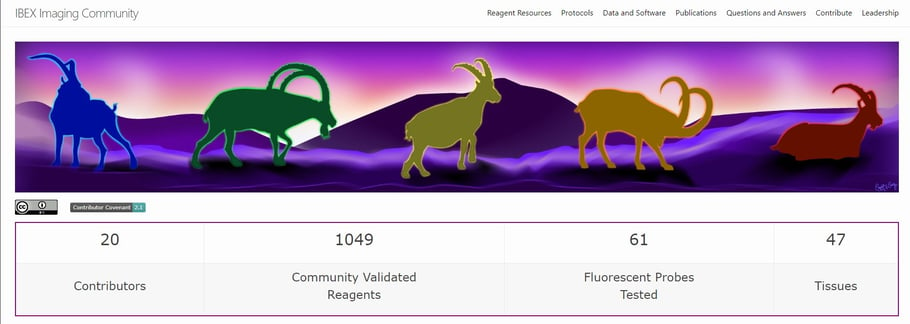
|
| Figure 1: The IBEX Imaging Community front page. |
That’s why scientists from around the world, including Andrea Radtke, PhD, and Ziv Yaniv, PhD, have created the IBEX Knowledge-Base, a community repository and resource for spatial biology enthusiasts. This dataset currently includes 1049 community-validated reagents from 20 contributors, including 61 fluorescent probes, representing imaging from 47 different tissues. Researchers upload and share both their successes (recommended reagents) and failures (not recommended reagents) along with information critical for the performance of a reagent, e.g., antigen retrieval conditions, dye inactivation details, tissue preservation method, and detergents that they used in their experiments. Researchers can then visit the IBEX imaging community discussion board to dive into conversations with other users. The entire dataset can be downloaded from Zenodo, including the reagent resources .csv file for easy filtering and sorting. Reference images can be viewed by clicking on the links in the "Agree" and "Disagree" columns found in the Reagent Resources table or by downloading directly from the Zenodo dataset.
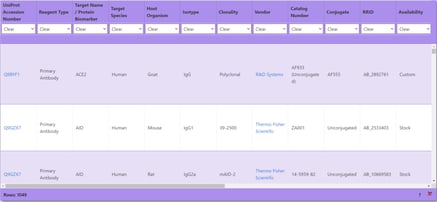 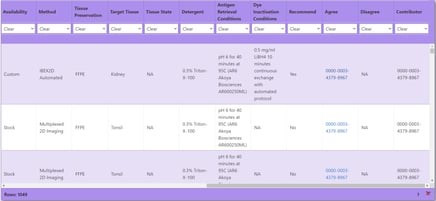
|
| Figure 2: Screenshot showing reagent entries with associated metadata adapted from the Affinity Reagent Working Group of the Human Biomolecular Atlas Program (HuBMAP) antibody metadata standards. |
And the dataset is rich. Experimental data includes reagent type, target species, target name, host organism, isotype, clone details, vendor, method, tissue preservation, target tissue, detergent, antigen retrieval conditions, and more. Users can also recommend or not recommend a particular reagent in the given conditions, along with the ability for any user to upload supporting documentation that agrees or disagrees with the recommendation. The goal is to easily share and find what works and what doesn’t while engaging in robust discussion with others in the IBEX community.
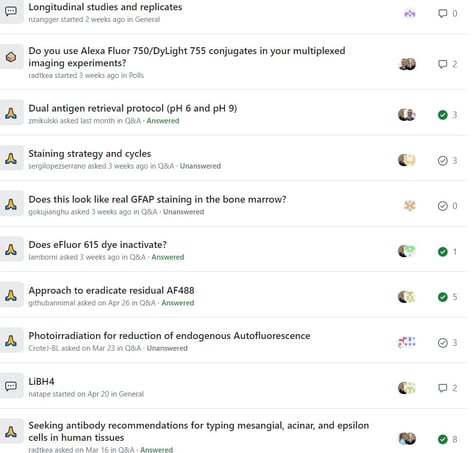 |
| Figure 3: Screenshot showing recent topics in the IBEX discussion forum where scientists from around the world can ask and answer questions. |
Andrea and Ziv were inspired by the open-software community when designing the IBEX Knowledge-Base, seeking to create an iterative process that is constantly becoming better, with more data, more discussion, and more functionality. Transparency, both in what works and in what doesn’t, and feedback are vital components of building both the community and the database. They particularly encourage people to upload and share their negative data. After all, they tell me, when something doesn’t work, it’s not a failure. It’s an education.
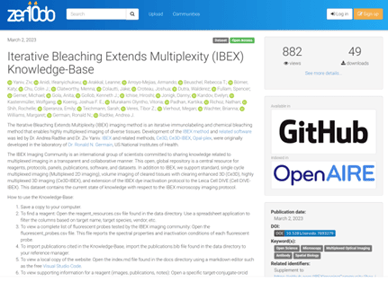 |
| Figure 4: Zenodo page showing the IBEX Knowledge-Base, with every contributor listed as an author. |
The IBEX Knowledge-Base is an invaluable resource for anyone performing multiplexed imaging, not just IBEX. The IBEX Imaging Community’s vision is an open, global repository for reagents, protocols, panels, publications, software, and datasets. It’s also a great place for anyone who has used IBEX and wants to preserve and share their validation work. Everyone who contributes to the IBEX Knowledge-Base is named on the Zenodo release in keeping with their value of shared ownership. Go check it out!
References and Resources
References
Radtke, A. J., Chu, C. J., Yaniv, Z., Yao, L., Marr, J., Beuschel, R. T., Ichise, H., Gola, A., Kabat, J., Lowekamp, B., Speranza, E., Croteau, J., Thakur, N., Jonigk, D., Davis, J. L., Hernandez, J. M., & Germain, R. N. (2022). IBEX: An iterative immunolabeling and chemical bleaching method for high-content imaging of diverse tissues. Nature Protocols, 17(2), Article 2. https://doi.org/10.1038/s41596-021-00644-9
Radtke, A. J., Kandov, E., Lowekamp, B., Speranza, E., Chu, C. J., Gola, A., Thakur, N., Shih, R., Yao, L., Yaniv, Z. R., Beuschel, R. T., Kabat, J., Croteau, J., Davis, J., Hernandez, J. M., & Germain, R. N. (2020). IBEX: A versatile multiplex optical imaging approach for deep phenotyping and spatial analysis of cells in complex tissues. Proceedings of the National Academy of Sciences, 117(52), 33455–33465. https://doi.org/10.1073/pnas.2018488117
More resources on the Addgene blog
Antibodies 101: Multiplex Immunofluorescence
Topics: Other, Antibodies





Leave a Comment